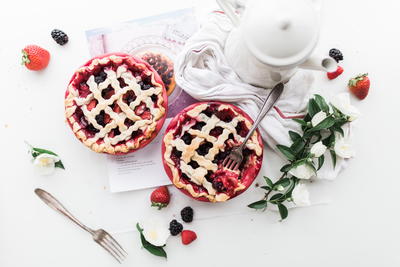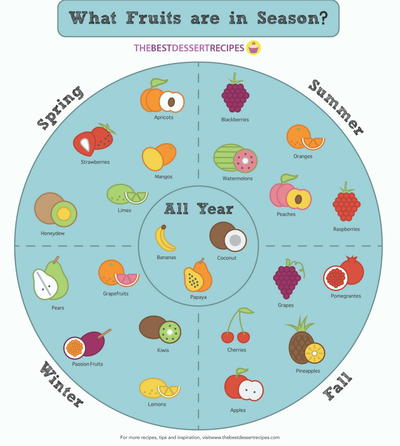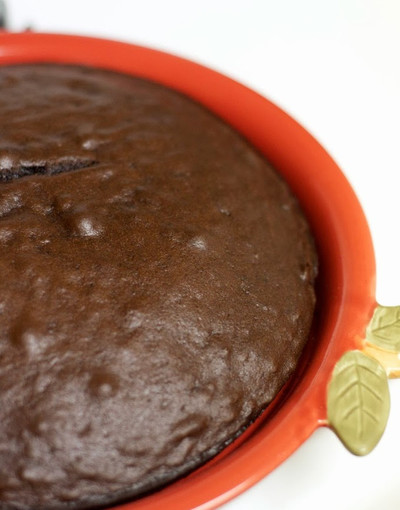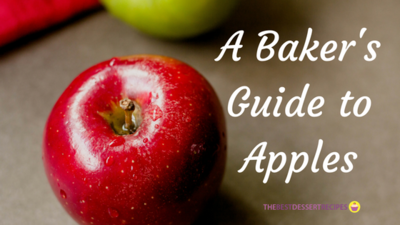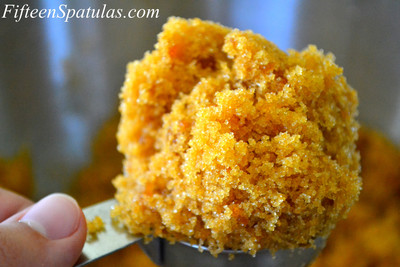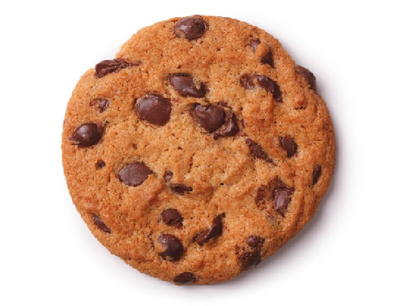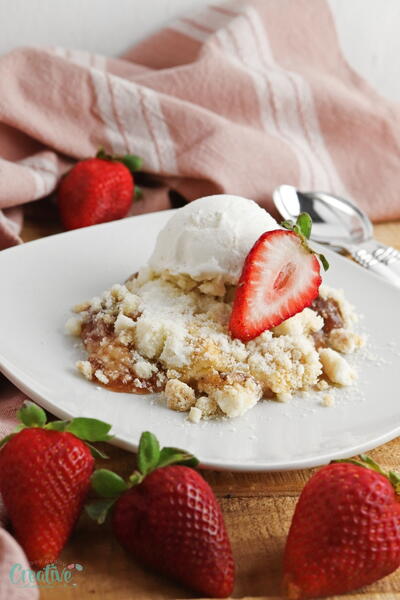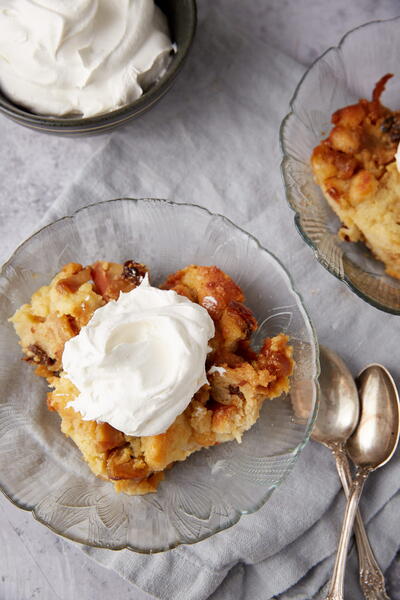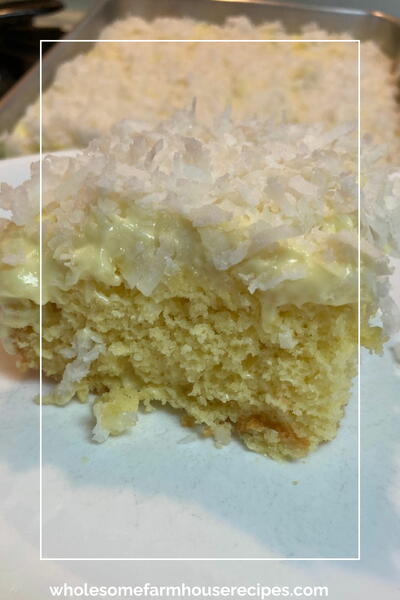How to Make Homemade Pie Crust
Making pie crust from scratch is easier than you think, and it's the secret to making your pies taste gourmet!
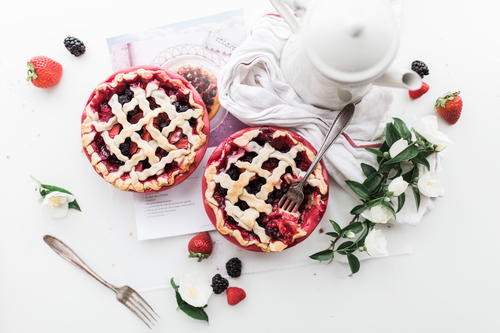
Knowing How to Make Homemade Pie Crust is an essential for any baker, but it's often overlooked. It's easier, of course, to just buy store-bought pie crust, but they really can't compare with the real thing.
The pie filling might be the star of the show when it comes to pies, but knowing the secrets to making your pie crust just right can turn your pie from average to out-of-this-world!
Here's what you need to know to become the master pie maker.
Tips and Tricks for Making Homemade Pie Crust:
- Add an egg! If you're having trouble getting your pie crust dough to stay together, try adding one egg yolk. This will help bind it together more by adding extra fat.
- Pay attention to the temperature of dough. Pie crust can be kind of sensitive to certain temperatures. When you're kneading your dough, try not to over do it and use your fingertips as much as possible. The palms of your hands are warmer than you think and over-kneading with your dough can have an effect on the temperature.
- Choose the right kind of pie pan. As with many desserts, choosing the right kind of baking pan is important. Glass pans will give you a flakier pie crust than metal pans.
- Keep your fats cold! Whether you're using butter, lard, or suet, keeping the fat nice and cold will prevent some of the negative effects of over-kneading and give you the best, flaky crust. In the summer time or when it's really humid out, it's probably best to freeze the fats that you're using.
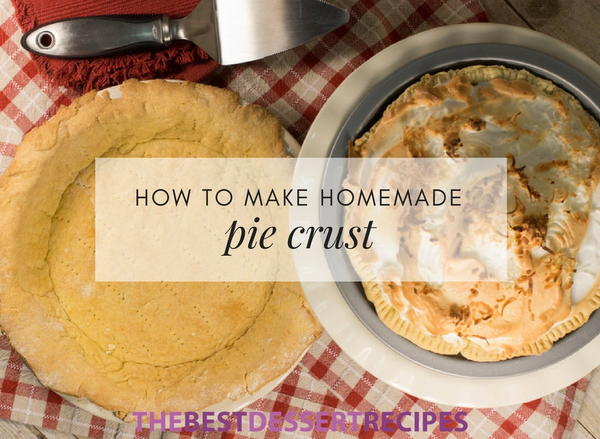
What You Need
2 1/2 cups all purpose flour
Pinch of salt
1/2 cup cold butter
8-10 tablespoons of ice water
1. Mix the flour, salt, and butter.
Place flour and salt into a deep bowl and mix to incorporate the salt. Grate the cold butter on the largest holes of a box grater on top of the flour and mix with a fork to coat the butter with flour. Using a pastry blender or large fork, mix in water one tablespoon at a time until the dough comes together and you can pinch a piece between your fingers and it holds together.
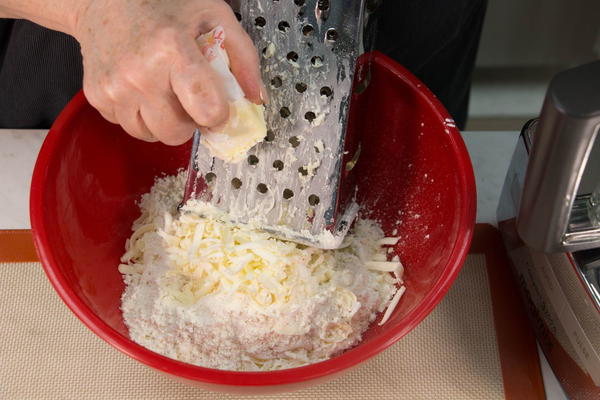
You can also make the dough in a food processor. Simply place the flour and alt in the bowl with the metal blade and pulse once or twice to mix.
Add in the grated butter and pulse briefly until the dough comes together. Do not let it go so long that the dough begins to form a ball.
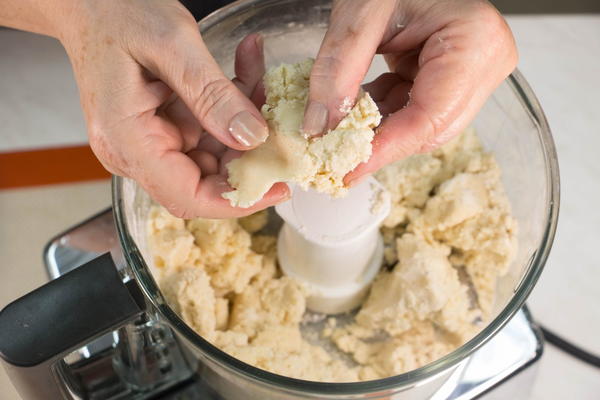
2. Knead and separate the dough.
Tip dough out onto a work surface which has been lightly dusted with flour. Use your hands to very briefly knead and fold the dough into a smooth ball, then cut into two pieces. Form each piece into a 4-inch disc about a half inch thick. Wrap in plastic wrap and chill for 30 minutes.
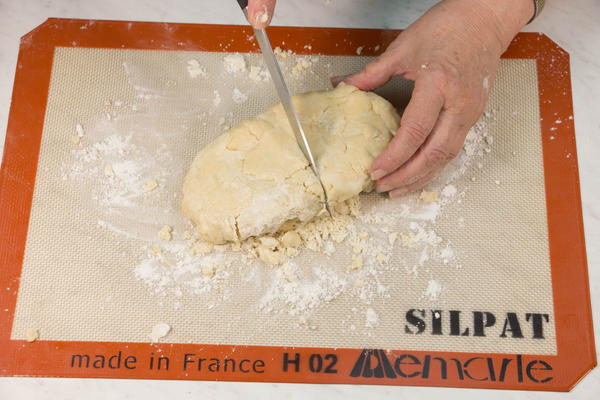
3. Roll out the dough.
Use a rolling pin to roll one disc on the lightly floured surface into a circle which is 12 -13 inches in diameter. Carefully roll the dough onto the rolling pin and lift it into the pie plate, trying to keep the dough from stretching. Press into the pie plate, trim the edges and roll and pinch them for a decorative raised border.
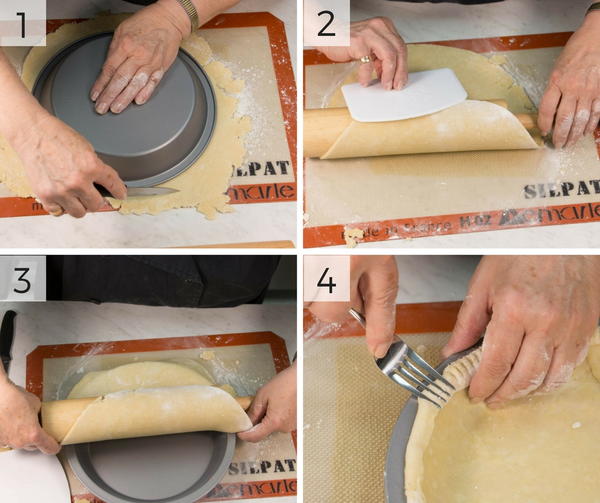
To Make a Pre-Baked Crust
1. Poke holes in the bottom.
Use a fork to poke small holes all over the bottom and up the sides of the shell about 1 inch apart, which keeps the dough from forming bubbles in the surface.
2. Use pie weights.
Preheat oven to 400 degrees F and press a sheet of parchment paper onto the surface and up the sides forming a bowl. Place enough rice or dried beans into this bowl to make about 1/2-inch thickness. There are storebought pie weight that you can buy, but rice or beans should work just fine. Using pie weights prevents the bottom of the crust from bubbling up and forming air pockets.
Place into the oven and bake 20 minutes, then remove the beans and paper and continue to cook another 10 to 12 minutes until shell is lightly browned and dry. Let cool before filling and finishing the pie.

To Make a Single Crust Pie
Wrap the remaining dough disc well in plastic wrap and store in a zip-top plastic bag in the freezer for another pie, up to 3 months later.
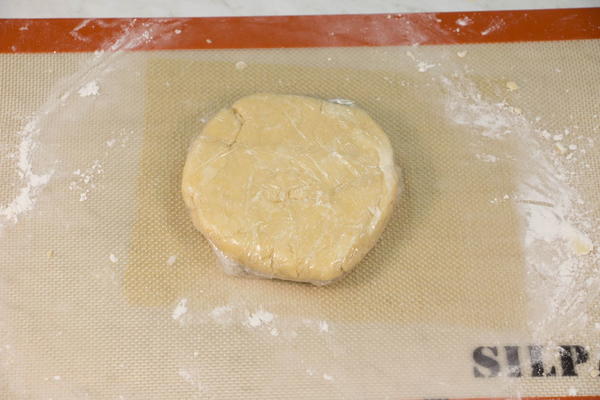
To Make a Double Crust Pie
Roll the second disc into a 10 circle and again lift it using the rolling pin to transfer it to the top of the filled pie plate. Pinch the upper and lower edges together, cut a vent in the top crust for steam to escape and bake the pie as your recipe directs.
Tips and Tricks for Making the Best Pie Crust
The secret to perfect pie crust is to keep the dough cool and use as little additional flour as possible when rolling out.
For the flakiest crust, you want bits of butter to be coated with flour and this trick of grating the cold butter and tossing it with the flour makes the process of mixing butter and flour more successful as well as easier and quicker.
Using dry rice or beans as pie weights: This step creates a weight to keep the raw dough flat in the pan while it begins to bake. Once the used rice or beans are cooled, label clearly and store until you need them again they may be used many times for future pies.

